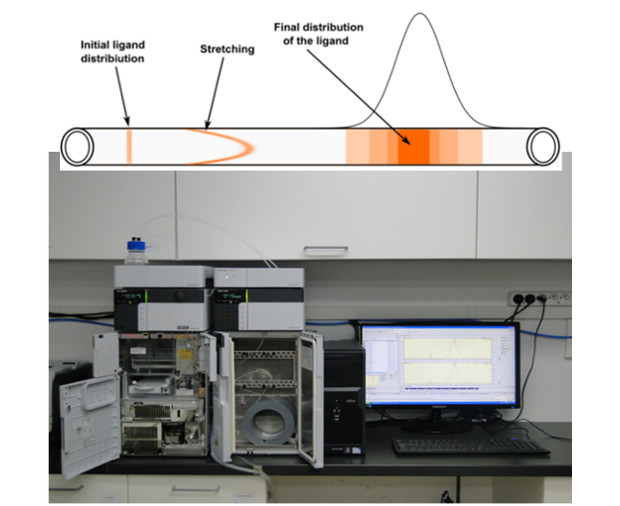
We intend to develop new analytical technique for determination of the association constant
of ligand-macromolecule complex formation. The current proposal is based on our
preliminary results published in Analytical Chemistry 82, 5463-5469, (2010) and patent
application P-400322 (filed 10.08.2012).
The Taylor Dispersion Analysis (TDA) can be shortly described as follows: an analyte (e.g.
ligand, macromolecule) injected into straight, long (>15 m) and thin (<0.5 mm) capillary is
carried by the Poiseulle flow, characterized by a parabolic velocity profile across the
capillary. The flow leads to the flow-induced widening of the initially narrow injection zone
of the analyte. The final profile of the analyte concentration has the Gaussian shape with
width inversely proportional to the molecular diffusion coefficient of the analyte D. For
ligand-macromolecule mixture injected into the capillary the complex formation governed by
the association constant leads to width of ligand concentration distribution characterized by
an effective diffusion coefficient of the ligand. The complex formation slows down the
ligand diffusion, since part of the time ligand diffuses bound in the complex with the diffusion
coefficient of the macromolecule. Effective diffusion coefficient depends on diffusion
coefficient of the ligand and macromolecule, macromolecule concentration and association
constant.
We expect that detailed study of Taylor dispersion method will open a new avenue for such
studies in analytical chemistry. We will further test application of the method to ligand-DNA,
protein-DNA and ligand-virus binding.